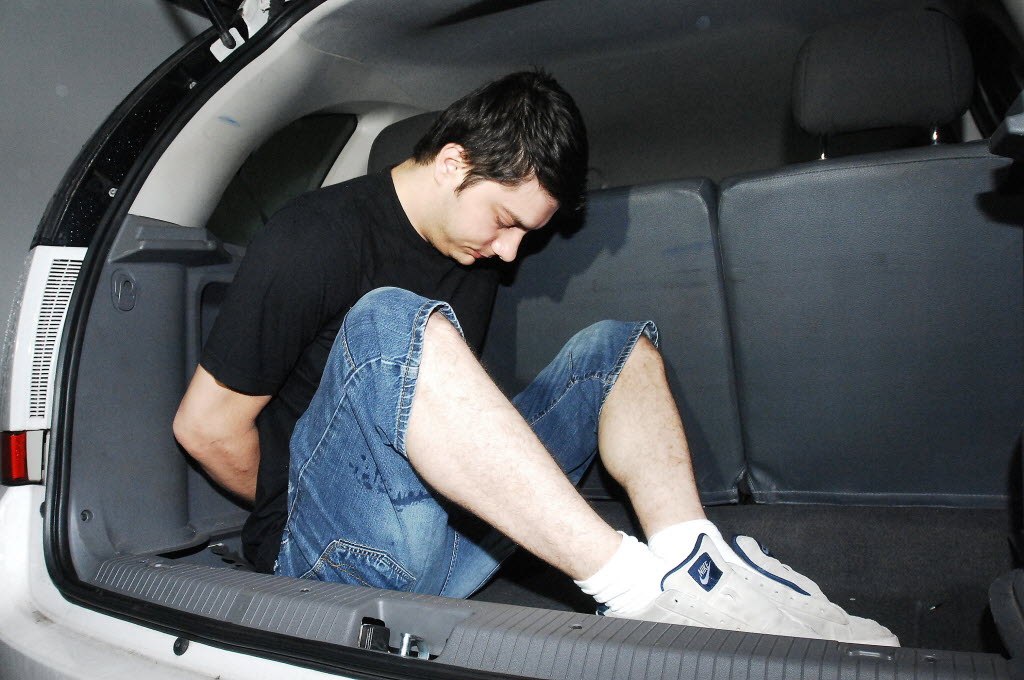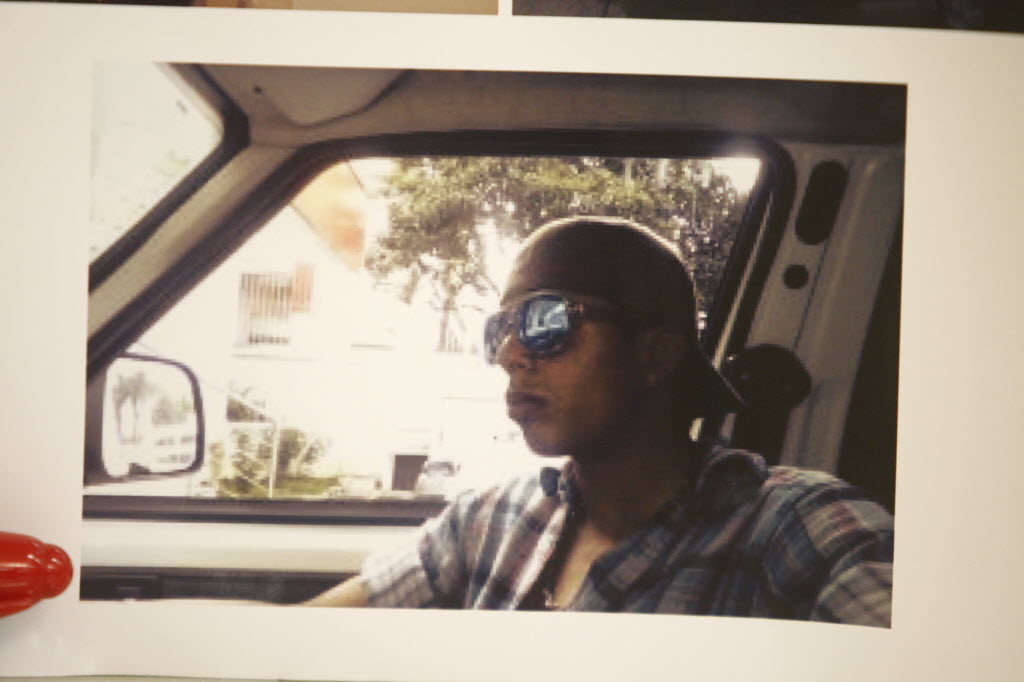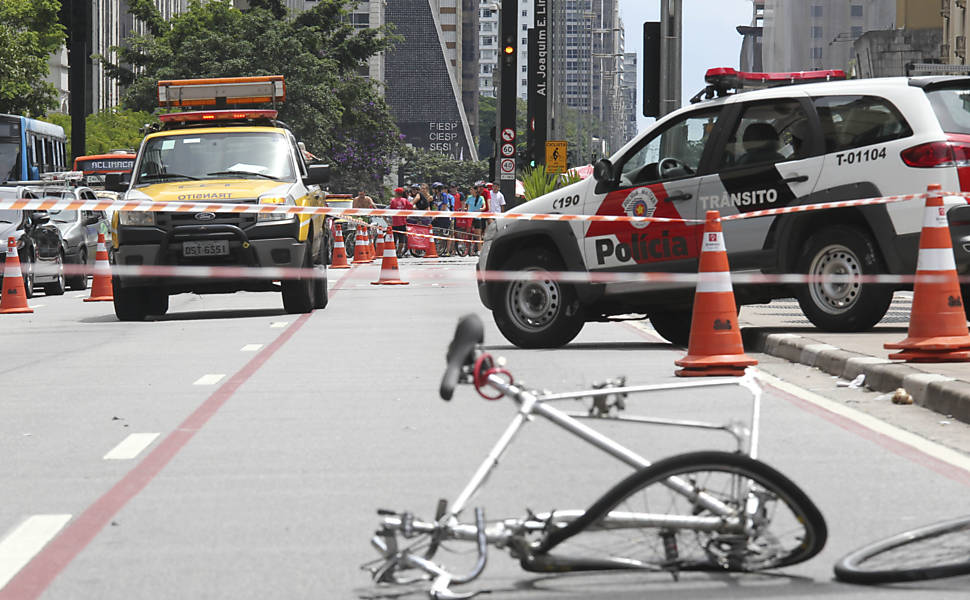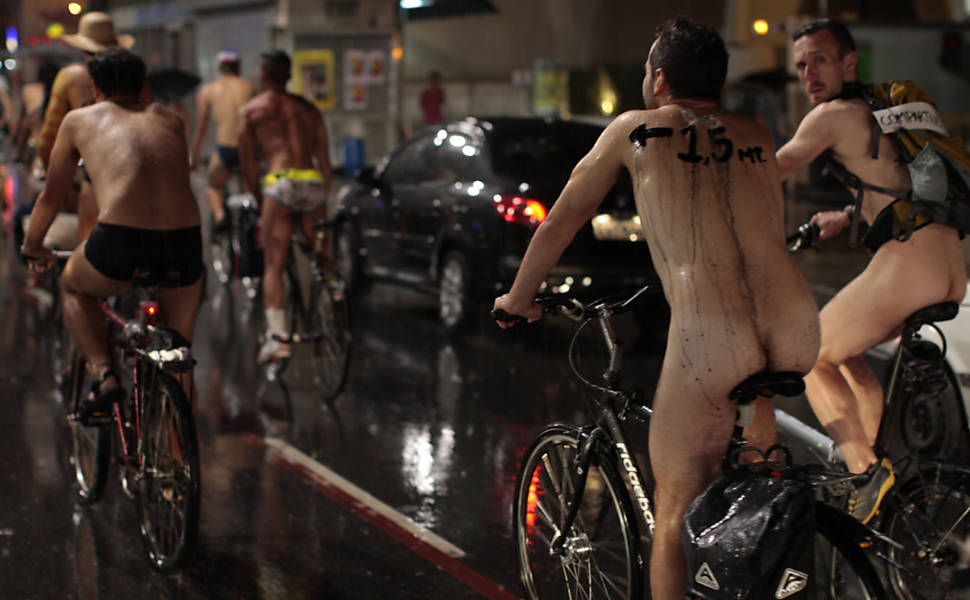In hyper-dynamic São Paulo, South America’s largest city, people battle for space every day – and never more so than on out the roads. This weekend, the battle hit a macabre low, when a 21-year old hit-and-run driver threw the detached arm of a cyclist he had struck into one of the city’s filthy rivers
By Claire Rigby
Sunday morning, 5.30am, São Paulo. Dawn is spreading over Avenida Paulista, the avenue that runs along the city’s dorsal ridge, which is lit up like a fashion shoot by powerful streetlights. Cycling to work from his home in Jardim Pantanal, a working-class neighbourhood in the city’s far-flung southern zone, the 21-year-old window cleaner David Santos de Souza has reached the high-rise avenue, and is minutes from his destination at the Instituto de Câncer, where he will be rappelling down the building to wash its long rows of windows.
Up ahead of him as he rides, workers are setting out cones for the Sunday ciclofaixa – a weekly cycle route down the centre of the avenue, which aims to bring paulistanos onto the streets on their bikes, from 7am to 4pm. Halfway along Paulista, in the last stretch of his almost 20km journey, David spots the cones already laid out on the other side of the road, and he glides through a gap in the central reservation to continue his ride, facing the oncoming traffic now, but feeling safer behind the cones.
Travelling in the other direction, another 21-year-old, the student Alex Siwek, is on his way home from a night at Josephine, an upmarket Itaim Bibi nightclub. He’s in high spirits, and driving fast. He’s laughing with his friend, talking loudly, and at a traffic light, he’s revving the engine of his Dad’s car, a Honda Fit, as a taxi driver draws up alongside. At Josephine, the bar bill reads R$96 (US$50) for three vodkas and an energy drink. Later, his friend says they’ve had 3 or 4 cans of beer each.
Worlds collide
You can guess what comes next. You can imagine it. Or some of it.
In a Bonfire of the Vanities moment, the psychology student starts zig-zagging in and out of the cones, overtaking another car and cutting in front of it, then mowing down three traffic cones as he approaches David, a ‘skinny boy‘ cycling towards him. The window cleaner sees the car coming and tries to jerk his bike aside and fall into the central reservation, but he can’t, and the car ploughs through more cones and straight into him. It crushes his silver bike, ripping off its back wheel and twisting the handlebars, and as David collides with the car’s splintering windshield, it tears his right arm off completely.
Alex stops the car. And then he takes off, leaving David and his bike lying in the road. And as he drives towards his home in Saúde, pausing to drop his friend home, at some point he notices David’s arm lying on the back seat of the car.
He drives to a dirty river close to his house, and he throws the arm into the water; then shortly afterwards, he walks into the police station nearest his home and asks to be taken into custody, saying he has hit someone with his car.

Rather go naked
Just the night before, a Saturday-night naked bike-riding protest had taken place on Avenida Paulista, in the pouring rain and in the white glare of its streetlights. Mostly in their underwear, the cyclists’ bodies were painted with slogans like ‘Fragile – With Care’, and ‘Now can you see me?’ On Sunday afternoon, the bike activists were back again, laying their bikes and their bodies in the street, at the place close to Brigadeiro metrô where Souza was hit, and gathering outside the police station where Siwek was being held, shouting ‘assessino!’ as the police inside tried to come up with a charge for the action of having thrown away Souza’s arm. (They went with ‘altering the scene of a crime’, adding the charge to failure to provide assistance to an injured party, leaving the scene of a crime, assorted traffic offences, and intentional homicide. The latter charge has already been dismissed, and Souza is recovering in hospital.)
São Paulo is not safe for bicycles: according to new figures, nine cyclists are hospitalized in SP each day. The city’s dense, stressed traffic is a menace to its pedestrians as well as cyclists, and most of all to motorcyclists, who die at the rate of five a day, in the state of São Paulo. Aside from the ciclofaixas, a small network of permanent ‘ciclovia’ cycle routes and a handful of patchy bike-rental and park-and-ride schemes, the city has pitiful provision for bicycles. And its army of drivers, addicted to their cars, have little experience of sharing the road with cyclists – and seemingly little desire to learn. Attempts to foment the kind of critical mass of bicycle use that ends up making cities safe for all cyclists are very much a work in progress; and despite a noisy, highly engaged cycling lobby, the sheer danger and scariness of cycling amongst SP’s traffic keeps even the best-intentioned of Paulistanos in their cars, unable to seriously contemplate bikes as a viable form of transport.
Two wheels good
And yet, often unacknowledged by bike enthusiasts, there are parts of São Paulo in which cycling reaches ‘European proportions’, as reported by Vanessa Correa in a feature in Folha’s saopaulo magazine last September. On pock-marked, pitted, sometimes unpaved streets, thousands upon thousands of cyclists use a mixture of rickety bikes and sleek, prized specimens to come and go, navigating their neighbourhoods and setting out on long rides to work in the city. It’s an army of David Santos de Souzas, and they don’t need to be encouraged to use bicycles: they have no other option.
In an interview she gave to Vincent Bevins, From Brazil’s editor, in issue #1 of Time Out São Paulo in 2010, the cycling activist Renata Falzoni talked about the hundreds of thousands of bicycle journeys made every day in São Paulo, and about her struggle to gentrify bike riding in pursuit of more cyclists: ‘In the early 1990s, I would never have openly recommended cycling as a form of transport – the image of the bicycle was too connected to poverty, so it was hard to talk about it with wealthy people. I had to create this image of the bike as an expensive, elite thing to help establish it as something acceptable for middle-class society.’
Drink up
Meanwhile down at the police station, Siwek refuses to give a blood sample or a breath test. A test carried out hours later proves inconclusive, but the police officers nevertheless judge him to have been under the influence of alcohol, going by the smell of ethanol on his breath, his behaviour at the time of arrest, and his defence’s admission that he had consumed a number of beers.
But despite the particular horror of Siwek’s crime and subsequent actions, driving while under the influence is perfectly acceptable for huge swathes of the middle-class São Paulo society Falzoni refers to. It’s widely socially tolerated, to the extent that it’s common for people to drive to a bar, drink at exactly the same rate as everyone else, then casually head off home by car, offering lifts. How to reconcile the size of the city, the difficulty of getting around it, and the conviviality of a night on the town without using your car? It’s unthinkable for many paulistanos.
When the Lei Seca – the law around drink-driving – was tightened up in December 2012, it was common to see complaints on Facebook and Twitter at the strictness of the law. ‘You can’t even eat a liqueur chocolate!’ was a frequent refrain, wildly disproportionate to the number of liqueur chocolates ever sold and eaten. But so what? And so what if you can’t even drink one beer and drive? ‘Everyone metabolizes alcohol at a different rate,’ said Alice Chasin of the International Association of Forensic Toxologists, in an article this week in Folha about resistance to the new Lei Seca. ‘You can’t create a law for each person. So that makes zero tolerance the best course of action.’
Horror show
On the day David Santos de Souza lost his right arm, one of the doctors who treated him, Rachel Baptista, wrote on her Facebook page about waiting to hear whether the arm would be arriving in time to attempt a reattachment, and her and her colleagues’ despair when they were forced to simply clean and suture the wound. ‘I want to manifest my indignation at the attitude of the monster who ran over the cyclist on Av. Paulista, and who ruined any chance of this boy recuperating his arm,’ she wrote. ‘I’m in favour of zero tolerance. There’s no way we can allow loopholes that permit such totally irresponsible people to drive in these conditions.’
Fines for drink driving in São Paulo are already stiff: it’s currently R$1915.40 (about $1,000 US dollars) for any case of drink driving, which is defined as any quantity of alcohol at all in the blood. But in order to create a real deterrent, you need a bit of horror – maybe even a ‘monster’ – to bring it home: to bring stigma and a shame at the thought of someone risking the lives of others. You need to feel chilled to the bone, thinking of Alex and thinking of David, about what you could do to someone – what you might do to someone else’s family, and to your own.
Alex, photographed ghost-faced and pointing into the river, accompanied by police officers, as firefighters attempted to find the lost arm. Pale, shocked and grimacing as he’s led to the vehicle taking him to solitary confinement in Belém prison. His mother, beside herself and receiving death threats by telephone. David’s sister, straight-backed and dignified as she reluctantly speaks to a TV camera outside the hospital, refusing to be drawn into hate-filled speech. His brother, telling journalists, ‘It’s possible, yes, to forgive [Alex].’ David, coming to his senses on the asphalt, touching the side of his body and asking about his arm; and then in hospital, showing a police officer his drawings and saying they would probably be the last ones he’d ever do.




